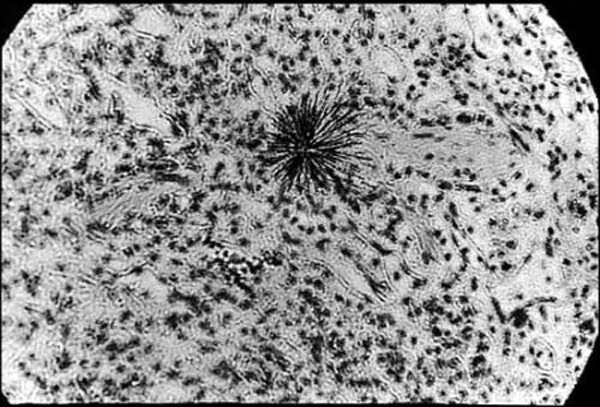News & Articles
Browse all content by date.

Contrary to reports that only gaseous radioactive materials were released by the triple-reactor Fukushima meltdowns in Japan in 2011, scientists reported early on that highly radioactive “hot particles” were released and carried long distances by wind.
“Cesium found 375 miles from Japanese plant,” read the headline in the Japanese daily paper Yomiuri Shimbun -- and reprinted in dozens of US papers March 17 and 18, 2012 (https://www.deseretnews.com/article/765560810/Cesium-found-almost-375-miles-from-Fukushima-nuclear-plant.html). The report noted that radioactive cesium-137 was found in plankton 375 miles east of the destroyed Fukushima reactors. Researchers at the University of Tokyo’s Atmosphere and Ocean Research Institute warned that “the radioactive cesium is likely to have accumulated in fish that eat plankton.” The cesium then bio-accumulates and bio-concentrates as the fish continue to consume bad plankton, and as bigger fish (tuna, cod, haddock, pollock, carp) eat smaller contaminated fish.
According to a 2012 report from Bellona Foundation, “radionuclides from the Fukushima-Daiichi nuclear power plant’s triple meltdown last year radioactively contaminated the entire northern hemisphere within days and the US west coast bore a significant brunt of so called hot particles, an independent scientific paper released yesterday claims.” (“Impact to US West Coast from Fukushima disaster likely larger than anticipated, several reports indicate,” Bellona, Sept. 19, 2012, http://bellona.org/news/nuclear-issues/nuclear-meltdown-in-japan/2012-09-impact-to-us-west-coast-from-fukushima-disaster-likely-larger-than-anticipated-several-reports-indicate)
Earlier field sampling of vehicle air filters done in April 2011 by Marco Kaltofen, of the Department of Civil & Environmental Engineering at Worcester Polytechnic Institute in Massachusetts, discovered breathable hot particles contaminated with cesium-137 in Seattle, Washington. (“Radiation Exposure to the Population in Japan after the Earthquake,” Marco Kaltofen, MS, PE, Dept. of Civil & Environmental Engineering, Worcester Polytechnic Inst., October 31, 2011, http://www.dartmouth.edu/~cushman/courses/engs43/MarcoKaltofen.pdf)
Arnie Gundersen, a former nuclear reactor engineer with Fairewinds Associates, reported June 12, 2011 that, “Air filters in Seattle indicate that people there were absorbing five hot particles every day for the month of April [2011]. That means that that hot particle gets absorbed in your lung, or winds up in your intestines, or it winds up in your muscle, or it winds up in your bone [where it] constantly bombards a very narrow piece of tissue.”
On July 18, 2011, Dr. Chris Busby, scientific secretary of the Low-Level Radiation Campaign in England and co-author of Fukushima and Health: What to Expect (Green Audit, 2011), said in an interview, “When we put the elements from the air filter next to x-ray film and we develop the film, we see different light sources and flashes of light. These are called ‘hot particles.’ They are very small. You cannot see them -- they are almost like a gas. If they are in the car filters, because cars ‘breathe’ air -- then they are inside of people, inside the lungs, inside the nose, inside the guts… and they will be causing significant harm.”
The journal Science of the Total Environment reported December 31, 2017 on a more recent and lengthier study in which detectable levels of hot particles of cesium-134 and cesium-137 were collected across Northern Japan and analyzed over a five-year period, from 2011 to 2016. (“Radioactively-hot particles detected in dusts and soils from Northern Japan,” sciencedirect.com/science/article/pii.) The hot particles were found in dusts and soils in over 80 percent of the samples. The study’s authors, Marco Kaltofena and Arnie Gundersen, said, “Some of the hot particles detected in this study could cause significant radiation exposures to individuals if inhaled. Exposure models ignoring these isolated hot particles would potentially understate human radiation dose.”
Proponents of nuclear power still get away with denying that such inhaled or ingested exposures cause harm. This is because when the cancers begin appearing 10, 15 or 20 years from exposure, no one can to prove they were caused by Fukushima’s hot particles. “Got cancer?” they ask. “Not our fault. Nuclear power is safe.”
| Tweet |

